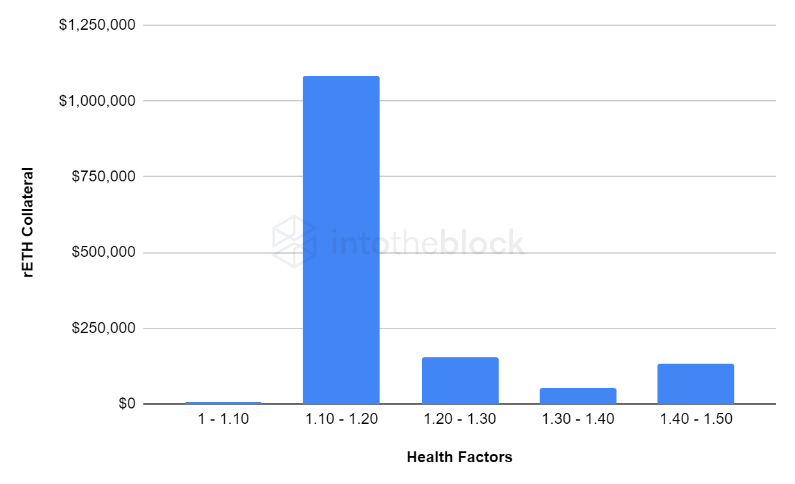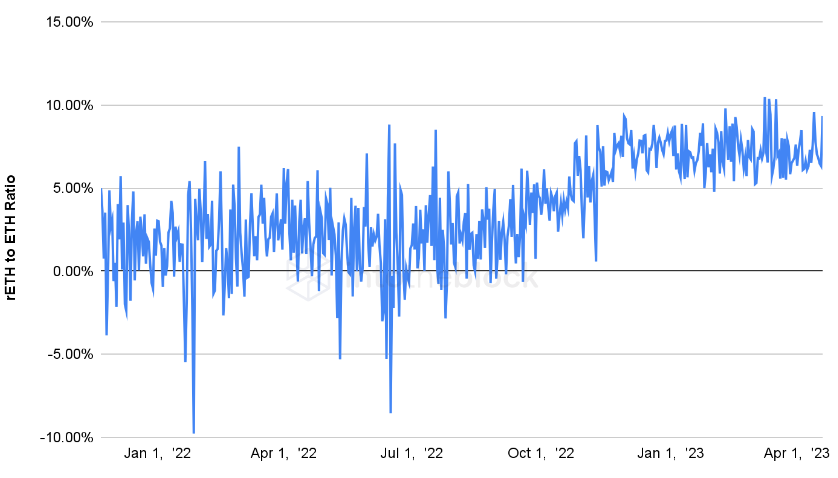Latest news about Bitcoin and all cryptocurrencies. Your daily crypto news habit.
Exploring risks & rewards of the leverage staking strategy

Leverage staking is a strategy in cryptocurrency trading that involves using borrowed funds to increase the amount of staking tokens the user holds. This strategy is used to amplify gains, but it also involves a higher level of risk. In leverage staking, traders borrow funds from a DeFi lending platform and then use those funds to increase their staking position. Users do this by borrowing against their initial deposit and resupplying it in the lending protocol, in this way “looping” the tokens to maximize profits. This allows them to benefit in a leveraged way from gains that the staking token accrue, without having to put up as much capital initially. At present, users who choose to implement this tactic may encounter profits ranging from 7% to 15% on their investment in ETH, which is contingent upon the interest rates offered by the protocol and the amount of leverage the user opts to utilize.
This strategy comes with risks both for users and the protocol, and it is important to be aware of them before getting involved with the strategy. This article examines risks by presenting data from rETH on the Ethereum Mainnet. Nevertheless, many of these risks are applicable to the broader DeFi markets as well.
Leverage & Liquidations
Leverage staking may result in the liquidation of a user’s position, which leads to the sale of their collateral and loss of their initial capital. Moreover, if the collateral is sold and the price drops, other accounts within the protocol may also be affected, resulting in a cascade of liquidations that can cause bad debt for the protocol. Therefore, proper liquidation processing is necessary to avoid such a scenario.
Additionally, borrowing funds incurs an interest rate, which can increase and make leverage staking positions more costly, ultimately reducing profits and potentially leading to liquidations if not monitored carefully.

Source: IntoTheBlock’s Risk Radar
The indicator above is displaying information from the Aave V3 rETH market. A health factor in a lending position is a metric that indicates the level of safety for a borrower’s position by measuring the ratio of collateral held to the borrowed amount. The users’ collateral has been categorized based on their individual health factors. Positions that have a health factor exceeding 1.50 present a lower risk level for the protocol.
Observing the quantity of collateral held within each health factor bracket can be valuable for tracking purposes. In the event of a de-peg of prices between the LSD and the underlying asset, knowing the level of exposure from the protocol within each health factor range can be helpful in reducing the level of risk.
DEX Liquidity
It is crucial to take into account the asset’s trading liquidity when implementing this type of strategy. This can be determined by evaluating the function between the token’s market capitalization, the deposits made on lending protocols, and the trading liquidity available for the token. Greater trading liquidity translates to increased safety when participating in this strategy. This implies that the means of exiting positions are expanded. When liquidity is limited, the market becomes vulnerable to manipulation by external entities that seek to profit from cascade liquidations in the protocol.
It is recommended to verify that the major pools associated with the LSD token are balanced before engaging in a leverage staking strategy. Furthermore, in the event of limited on-chain liquidity and absence of trading for the LSD token on centralized exchanges, oracles may source their price feeds from the illiquid pools. This can become a problem as a malicious actor may exploit this vulnerability to manipulate the LSD token price and trigger cascade liquidations throughout the protocol.
This type of attack involves various other factors, including the type of oracle implementation used by the lending protocol for the token. Moreover, lending protocols take measures to mitigate this type of attack, such as implementing borrowing caps for the asset. Additionally, some lending protocols have implemented specific mechanisms to prevent the occurrence of cascade liquidations. It’s important to make sure that these are in place in order to avoid major losses.
Risk Monitoring
Finally a good track record and constant monitoring of the LSD token is of good practice to lower risk on this type of strategy. In most DeFi implementations of LSD tokens, the value of the token tends to appreciate over time as a result of accruing the rewards. This causes a deviation from the underlying token that is the source of its rewards.

Source: IntoTheBlock’s Risk Radar
The chart depicted above displays the rETH to ETH ratio, which highlights the deviation between the two tokens. Price deviations between the tokens can be observed along the way. Keeping track of suitable health factors for positions in lending protocols is crucial, particularly with regard to the deviation of these tokens. Another important aspect to consider is to examine the historical record of deviation in the liquid staking token and assess the size of previous de pegs, to determine the risk of liquidation in positions.
Final Thoughts
In conclusion, leverage staking strategies can carry some risks, especially when dealing with illiquid LSD tokens. The health factor of a lending position is a crucial metric to monitor, and positions with a low health factor can be considered at risk. Additionally, the liquidity and balance of major pools involved in the LSD token must be checked, as low liquidity and a lack of trading on centralized exchanges can make the market prone to manipulation. It’s important to analyze the deviation track record of the LSD token to see how big the de-pegs have been and assess the risk of liquidations. By taking these factors into account and continuously monitoring the liquid staking token, investors can minimize the risk of losses and maximize profits in a leveraged staking strategy in DeFi.
Analyzing Leveraged Staking Strategies
After the Shapella Fork was originally published in IntoTheBlock on Medium, where people are continuing the conversation by highlighting and responding to this story.
Disclaimer
The views and opinions expressed in this article are solely those of the authors and do not reflect the views of Bitcoin Insider. Every investment and trading move involves risk - this is especially true for cryptocurrencies given their volatility. We strongly advise our readers to conduct their own research when making a decision.